Quick Guide to Starting Your Retirement Investment:
– Save Early: The sooner you start, the more you benefit from the power of compounding interest.
– Diversify: Don’t put all your eggs in one basket. Diversify your investments across stocks, bonds, and other vehicles.
– Understand Retirement Accounts: Choose between 401(k), Traditional IRA, Roth IRA, etc., based on your financial situation and goals.
Are you feeling overwhelmed about how to invest for your retirement? You’re not alone. Many people near retirement worry if they’ve saved enough or made the right investment choices. It’s a big step, moving from earning and saving to spending and enjoying your savings. But here’s the good news: it’s never too late or too early to start.
Retirement investing isn’t just about stashing away money; it’s about making that money work for you, so you can enjoy a comfortable and secure retirement. The key lies in understanding the basics – the different types of retirement accounts available to you and the investment options each offers.
Starting early can make a significant difference, allowing your investments to grow over time. But even if you’re getting a late start, there are strategies to help you catch up. Essential steps like choosing the right retirement accounts (be it a 401(k), IRA, or others) and a mix of investments can lay a strong foundation for your retirement savings.

Choosing the Right Retirement Account
When it’s time to invest for retirement, the sheer number of options can be overwhelming. But, choosing the right type of account is crucial for your future financial security. Let’s break down the most common options: 401(k) plans, Traditional IRA, Roth IRA, SEP IRA, SIMPLE IRA, and Defined contribution plan, to help you make an informed decision.
401(k) Plans
- What They Are: Offered by employers, allowing employees to save a portion of their paycheck before taxes are taken out.
- Pros: Often come with employer matching contributions, which is free money for your retirement.
- Cons: Limited investment options compared to other accounts.
- Best For: Employees with access to employer matching.
For a deeper dive, read about the benefits of 401(k) plans and how to maximize your contributions here.
Traditional IRA
- What They Are: Individual accounts that allow you to make pre-tax contributions, reducing your taxable income.
- Pros: Tax deduction now, pay taxes on withdrawals in retirement when you might be in a lower tax bracket.
- Cons: Required Minimum Distributions (RMDs) start at age 72.
- Best For: Anyone looking for a tax break now and those without a 401(k) option.
Roth IRA
- What They Are: Funded with after-tax dollars, allowing for tax-free growth and withdrawals in retirement.
- Pros: No RMDs and tax-free withdrawals.
- Cons: Contributions are not tax-deductible.
- Best For: Individuals expecting to be in a higher tax bracket in retirement.
Learn more about the differences between Traditional and Roth IRAs here.
SEP IRA
- What They Are: Simplified Employee Pension plan, ideal for self-employed individuals or small business owners.
- Pros: Higher contribution limits than traditional IRAs.
- Cons: Only the employer can contribute.
- Best For: Self-employed or small business owners with few or no employees.
SIMPLE IRA
- What They Are: Savings Incentive Match Plan for Employees, allowing both employer and employee contributions.
- Pros: Easy and inexpensive to set up and operate.
- Cons: Lower contribution limits compared to SEP IRAs and 401(k)s.
- Best For: Small businesses with 100 or fewer employees.
Defined Contribution Plan
- What They Are: Retirement plan where the amount contributed is defined, but the benefit at retirement is not.
- Pros: Flexibility in choosing how much to contribute. Often includes employer contributions.
- Cons: Investment risk falls on the employee.
- Best For: Employees looking for more control over their retirement savings and those with access to employer contributions.
Choosing the right retirement account depends on your current financial situation, your future income expectations, and whether you’re self-employed or have access to employer-sponsored plans. At Principal Preservation Services, we understand the importance of making the right choice. We’re here to guide you through the options and help you create a retirement saving strategy that aligns with your long-term financial goals. Let us help you navigate the complexities of retirement planning. Schedule your no-cost, no-obligation financial review today.
The key to a successful retirement is starting early and making informed choices about where to invest your money. Your future self will thank you.
Investment Strategies for Retirement
Investing for retirement isn’t just about putting money away; it’s about wisely managing that money to grow over time. Here at Principal Preservation Services, we emphasize three core strategies: Diversification, Asset Allocation, and Risk Management. Let’s break these down in simpler terms.
Diversification: Don’t Put All Your Eggs in One Basket
Imagine you have a basket and you’re collecting eggs. If you only collect from one chicken and that chicken stops laying eggs, you’re out of luck. But if you collect from many chickens, you’re more likely to have a steady supply. That’s diversification.
In investing terms, this means spreading your investments across different types of assets like stocks, bonds, and perhaps real estate. This way, if one investment performs poorly, you’re not at total loss because your other investments can help balance things out.
Asset Allocation: Mixing the Right Ingredients
Think of asset allocation like baking a cake. Depending on the occasion, you might want a different flavor, size, or decoration. Similarly, your investment strategy should be tailored to your personal financial goals, time horizon, and risk tolerance.
- Younger investors might lean more towards stocks for growth potential.
- Those closer to retirement may prefer bonds for more stability.
It’s all about finding the right mix for you. And remember, your ideal asset allocation will likely change as you get closer to retirement, requiring periodic adjustments.
Risk Management: Avoiding Financial Bumps
Risk management is like wearing a seatbelt. It doesn’t prevent accidents, but it can minimize injuries. In the financial world, it’s about protecting your investments from major downsides.
This could mean setting stop-loss orders on stocks, diversifying across various sectors and countries, or choosing investments that historically have lower volatility. It’s all about not exposing yourself to unnecessary risk, especially as you near retirement.
By focusing on these three strategies, you can build a robust retirement portfolio that aligns with your financial goals and risk tolerance. At Principal Preservation Services, we’re here to guide you through these decisions, ensuring your retirement savings are well-protected and poised for growth.
Smart investing isn’t just about picking winners; it’s about managing risk, diversifying your portfolio, and aligning your investments with your personal goals. Let’s work together to make your retirement dreams a reality. Contact us to learn more about how we can help you navigate your retirement investment strategy.
Common Retirement Investments
When planning to invest for retirement, it’s crucial to understand the options available to you. Here’s a straightforward guide to some of the most common retirement investments.
Target-Date Funds
Target-date funds are a fantastic “set it and forget it” option. You simply choose a fund with a target year closest to your retirement date. The fund automatically adjusts its asset allocation as you get closer to retirement, becoming more conservative to protect your savings. It’s a hassle-free choice for those who prefer not to actively manage their investments. For more insights on target-date funds, you might find our detailed exploration helpful. Read more about target-date funds.
Income Annuities
Income annuities can provide a guaranteed income stream for life, much like a traditional pension. By purchasing an annuity from an insurance company, you’re essentially creating your own pension plan. This can be particularly appealing for those looking for certainty in their retirement income. Our discussions on annuities offer a deeper dive into how they can protect against uncertain markets. Learn more about income annuities.
Diversified Bond Portfolio
Bonds are a cornerstone of any diversified retirement portfolio, offering fixed income while potentially lowering overall investment risk. With options ranging from Treasury notes to municipal and corporate bonds, investors can choose based on yield, duration, and credit quality. Given the recent interest rate changes, bonds have become an even more compelling choice for income-seeking investors. Discover the benefits of a diversified bond portfolio.
Total Return Investment Approach
A total return strategy involves generating income through interest, dividends, and capital gains. This approach doesn’t just rely on yield but also looks at the appreciation of your assets over time, aiming to provide a more flexible and potentially higher-returning investment strategy for retirement. It’s about balancing stocks and bonds to meet or exceed your withdrawal rate. Explore the total return investment approach.
Income-Producing Equities
For those looking to generate income while still benefiting from the potential for capital appreciation, dividend-paying stocks and REITs (Real Estate Investment Trusts) are attractive options. Dividend stocks distribute a portion of the company’s earnings to shareholders regularly, while REITs offer exposure to real estate investments without the need to directly manage properties. Dive deeper into income-producing equities and REITs.
Each of these investment options plays a crucial role in a well-rounded retirement portfolio. The key is to match them with your individual financial goals, risk tolerance, and time horizon. At Principal Preservation Services, we’re committed to helping you navigate these choices, ensuring your investments align with your vision for retirement. Smart investing is a journey, and we’re here to guide you every step of the way. Reach out to us for personalized advice on building a robust retirement investment strategy.
Maximizing Retirement Savings
Maximizing your retirement savings is crucial to ensure a comfortable and secure retirement. Let’s look at some strategies that can help you boost your retirement funds.
The $1000 a Month Rule
Wes Moss introduced a simple yet effective strategy for visualizing your retirement savings. According to this rule, for every $1,000 of monthly income you want in retirement, you should aim to have $240,000 saved. This approach helps in breaking down the overwhelming task of retirement savings into manageable targets. It’s a powerful way to gauge how much you need to save to achieve your desired monthly income in retirement.
Employer 401(k) Match
One of the most beneficial ways to boost your retirement savings is by maximizing your employer’s 401(k) match. It’s essentially “free money” towards your retirement. Make sure you contribute at least enough to get the full match offered by your employer. If you’re 50 or older, take advantage of catch-up contributions to further increase your savings. This additional amount allows those closer to retirement to save more, compensating for any missed savings opportunities in the past.
IRA Contributions
When it comes to Individual Retirement Accounts (IRAs), you have two main options: Traditional and Roth. With Traditional IRAs, your contributions may be tax-deductible, but you’ll pay taxes on withdrawals in retirement. Roth IRAs, on the other hand, offer tax-free growth and withdrawals, as contributions are made with after-tax dollars. For 2023, the contribution limit is $6,500, or $7,500 if you’re age 50 or older. Deciding between a Traditional or Roth IRA depends on your current tax situation and expected tax bracket in retirement.
Investing in Stocks and Stock Funds
Investing in stocks and stock funds can offer significant growth potential for your retirement savings. While stocks come with higher risk, they also have the potential for higher returns compared to other investment types. For those looking for a more hands-off approach, indexed annuities can provide a balance between growth potential and protection against market downturns. They allow for participation in the gains of the stock market while protecting your principal from market losses.
At Principal Preservation Services, we understand the importance of maximizing your retirement savings through strategic planning and smart investment choices. Whether it’s taking full advantage of your employer’s 401(k) match, making informed decisions on IRA contributions, or exploring growth opportunities in the stock market, we’re here to support you in building a secure financial future. Reach out to us to learn more about how we can help you maximize your retirement savings for a comfortable and fulfilling retirement.
Planning for Different Retirement Ages
As you navigate through different stages of your life, your approach to retirement investing should adapt to reflect your changing needs and risk tolerance. At Principal Preservation Services, we understand the importance of tailoring your investment strategy to suit your age, ensuring that you’re well-prepared for the retirement you’ve envisioned. Let’s delve into how retirement investing strategies evolve as you reach significant age milestones.
Investing at Age 50
As you hit the half-century mark, it’s time to evaluate your retirement strategy with a more conservative lens. The focus shifts towards preserving the wealth you’ve accumulated over the years while still seeking growth opportunities that align with a lower risk profile.
-
Conservative strategies: At this age, balancing your portfolio to include a mix of stocks and bonds can help mitigate risk while still providing the potential for growth. Considering a diversified bond portfolio as part of your investment can offer stable, fixed income, reducing volatility and providing a cushion against market fluctuations.
-
Bond focus: Government and high-quality corporate bonds can be particularly appealing for their relative safety and steady income stream. Municipal bonds may also offer tax advantages, making them a valuable component of your investment strategy at this stage.
Investing at Age 60
As retirement nears, generating income to support your lifestyle becomes a priority. This is the time to ensure your investments can provide you with a reliable income stream throughout retirement.
-
Income generation: Income-producing equities, such as dividend-paying stocks and REITs (Real Estate Investment Trusts), can play a crucial role in your portfolio, offering the potential for income along with growth.
-
Annuities: For those seeking a guaranteed income stream, income annuities can be an attractive option. By converting a portion of your savings into an annuity, you can secure a steady payout, reducing the risk of outliving your savings.
Investing at Age 70
At 70 and beyond, preserving capital and ensuring accessibility to your funds become paramount. The emphasis is on safe investments that can provide security and peace of mind during your retirement years.
-
Safe investments: Treasury bills (T-bills) and high-quality bonds are ideal for protecting your principal. These investments offer safety and liquidity, allowing you to access your funds when needed without significant risk to your capital.
-
Extending retirement age: If you’re able to continue working, delaying retirement can significantly impact your financial security. Not only does it allow you to save more, but it also reduces the number of years you’ll need to rely on your retirement savings, potentially allowing for more aggressive investment choices to be scaled back.
At every stage of your retirement planning journey, we at Principal Preservation Services are here to provide guidance and support. Whether you’re adjusting your investment strategy at age 50, focusing on income generation at age 60, or securing safe investments at age 70, our team is committed to helping you achieve the retirement you deserve.

It’s never too late to adjust your course and make informed decisions about your retirement investing strategy. Let us help you navigate these important decisions with confidence. Contact us today for a personalized review of your retirement plan.
Frequently Asked Questions about Retirement Investing
Investing for retirement often comes with questions. We’ve compiled some of the most common queries to help you navigate your path. Informed decisions today can lead to a more secure and comfortable retirement tomorrow.
What is the best way to start investing for retirement?
The journey to a robust retirement fund can start with several steps, but here’s a simple roadmap to get you going:
-
Open a Traditional IRA: It’s a straightforward way to start saving. Your contributions may be tax-deductible, and your investments grow tax-deferred until you withdraw them in retirement. Learn more about Traditional IRAs.
-
Consider a Roth IRA: With a Roth IRA, your contributions are after-tax, but your withdrawals in retirement are tax-free. This can be a great option if you expect to be in a higher tax bracket in retirement. Discover the benefits of a Roth IRA.
-
401(k) Plans: If your employer offers a 401(k) plan, make sure you’re contributing enough to get any match they offer. This is essentially free money and can significantly boost your retirement savings. Maximize your employer’s 401(k) match.
-
Pick Your Investments: Whether you’re investing in a 401(k), IRA, or another account, choosing the right investments is crucial. Consider your risk tolerance and retirement timeline when making your selections.
How can a 70-year-old invest $100K for retirement?
At 70, your investment strategy should focus on preserving capital while generating income. Here are some suggestions:
-
Invest in Stocks and Stock Funds: While traditionally riskier, they offer growth potential. Consider blue-chip and dividend-paying stocks for stability and income. Explore stock investment options.
-
Consider Indexed Annuities: They can provide a balance between risk and return, offering a guaranteed income stream while still allowing for some growth potential.
-
Leverage T-bills and Bonds: These are generally safer investments that can provide a steady income. Consider a ladder strategy to manage interest rate risks.
-
401(k) and IRA Catch-Up Contributions: If you haven’t maximized your contributions in the past, now might be a good time to catch up. These additional contributions can significantly impact your retirement savings. Understand catch-up provisions.
What is the $1000 a month rule for retirement?
Created by Wes Moss, the $1,000/month rule is a helpful guideline for estimating how much you need to save for retirement. According to this rule, you should aim to have $240,000 saved for every $1,000 of monthly income you want in retirement. This strategy helps visualize your retirement goals and can guide your saving and investing plan. Learn about the $1,000 a month rule.
These FAQs offer a starting point for your retirement investing strategy. Each individual’s financial situation is unique, and what works for one person may not work for another. It’s essential to consider your financial goals, risk tolerance, and investment timeline when making decisions. At Principal Preservation Services, we’re here to offer guidance and support as you plan for a secure and fulfilling retirement. Reach out to us for a personalized approach to your retirement planning needs.
Conclusion
Investing for retirement might seem like a journey filled with complex decisions and uncertain outcomes. But, with the right planning and advice, it can be a rewarding process that secures your financial future and peace of mind. At Principal Preservation Services, we understand the importance of long-term planning and the value of expert advice.
Why Long-Term Planning Matters
Long-term planning is your roadmap to a successful retirement. It helps you set realistic goals, understand your financial needs, and make informed decisions about how to invest for retirement. Whether you’re aiming to travel the world or enjoy a quiet life surrounded by family, planning is the first step toward making those dreams a reality.
The Importance of Expert Advice
Navigating retirement investments can be daunting. From choosing the right retirement accounts to understanding the nuances of different investment strategies, there’s a lot to consider. That’s where expert advice comes in. A knowledgeable advisor can provide clarity, offer personalized recommendations, and help you avoid common pitfalls.
At Principal Preservation Services, we’re committed to helping you achieve lasting financial success. Our approach is tailored to your unique needs and goals. We prioritize transparent and sound advice, and we’re proactive in developing strategies that protect and grow your investments.
Whether you’re just starting to think about retirement or you’re looking to refine your existing plan, we’re here to help. We invite you to explore our retirement philosophy and services to learn more about how we can assist you in building a secure and prosperous future.
The best time to start planning for retirement is now. Let us be your partner in creating a retirement plan that brings your dreams to life. Together, we can navigate the complexities of retirement planning and invest for a future that’s as bright as it is secure.









